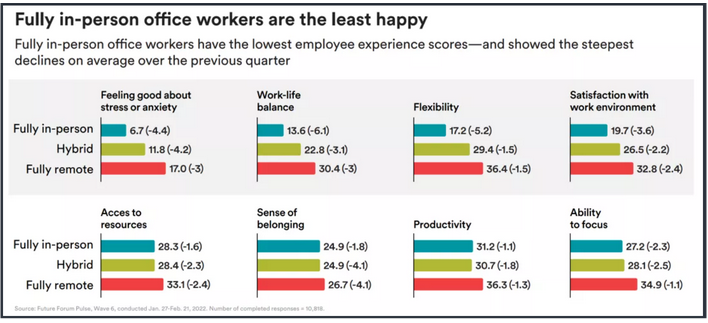By: Krissy Fuller
Returning to the office policies are still making headlines. If you’ve been on LinkedIn lately, or perhaps read some journals you’ve probably noticed a growing trend of companies reassessing their workplace strategies post-pandemic. Some are considering eliminating hybrid or remote work policies in favor of a full return to the office. While there are many aspects that go into making this decision, I thought it would be fun to look at how this one decision can have significant impacts on employee satisfaction, productivity, and the overall business. (Yes… this is FUN for me – fascinating really)
To keep it brief (because I could nerd out on this all day) I’ve made a nice little list of the perceived pros and cons of making such a move.
Pros of Eliminating Hybrid or Remote Work:
Cons of Eliminating Hybrid or Remote Work:

5. Limited Talent Pool: Requiring in-office presence may restrict hiring to local candidates, potentially missing out on national/global talent.
6. Work-Life Balance Challenges: Remember that carpet commute I mentioned earlier, employees may struggle to maintain work-life balance without the flexibility of remote work. Drop-off for schools, afterschool programs, workouts – these all factor in to not having to commute on average 30 mins each way.
7. Environmental Impact: Increased commuting can lead to a larger carbon footprint for the company.
The decision to eliminate hybrid or remote work policies is complex and depends on various factors including what matches with your specific company culture, industry norms, and employee preferences. While there are potential benefits to a full return to the office, companies must carefully weigh these against the possible drawbacks. A thoughtful approach that considers employee feedback and business needs is crucial in navigating this significant workplace shift.
Remember, there’s no one-size-fits-all solution. What works for one company may not work for another. It’s essential to assess your unique situation and make a decision that aligns with your organizational goals and values. ANDDDDD just to throw this out there what if we all followed suit to the UK companies paving the way with a 4 day work week. Say whattttt???? Who’s with me?!
*In 2022, 61 companies in the UK took part in an experiment that moved their employees to a four-day workweek with no reduction in pay. They began it as a six-month experiment, but today, 54 of the companies still have the policy with just over half having declared it permanent.

Want to see everything we offer with complete pricing? Fill out the form below and we will email you our brochure.